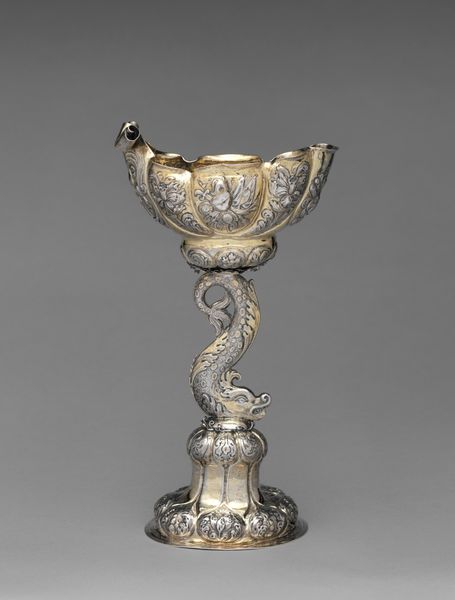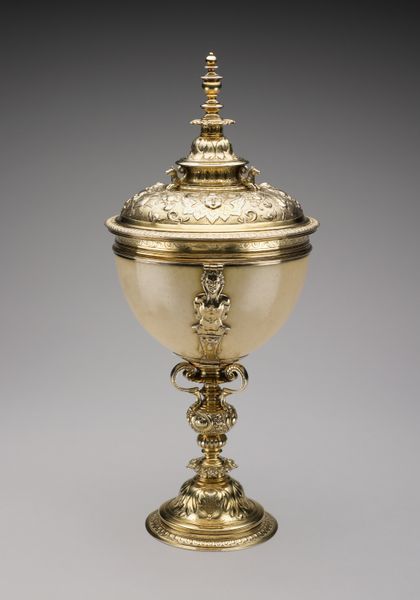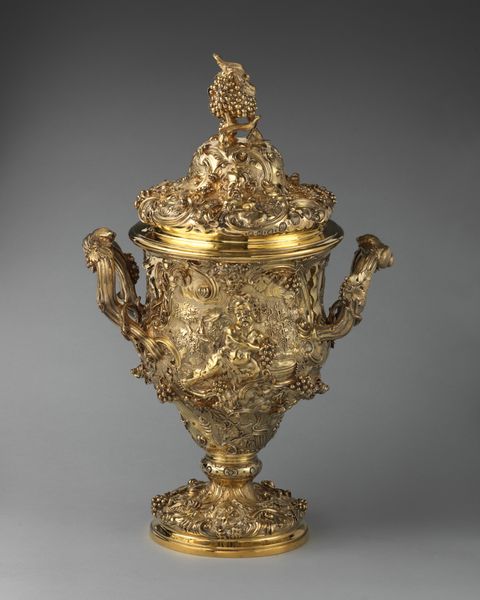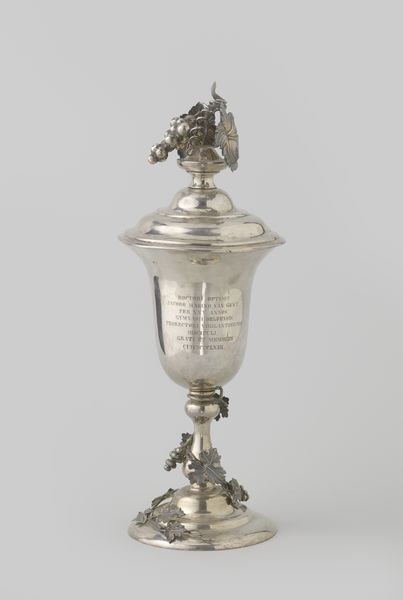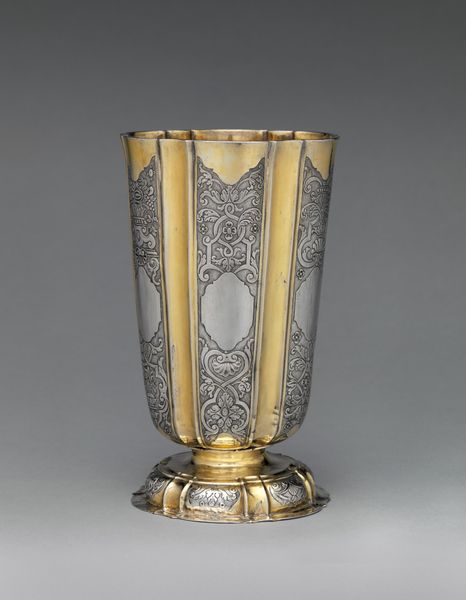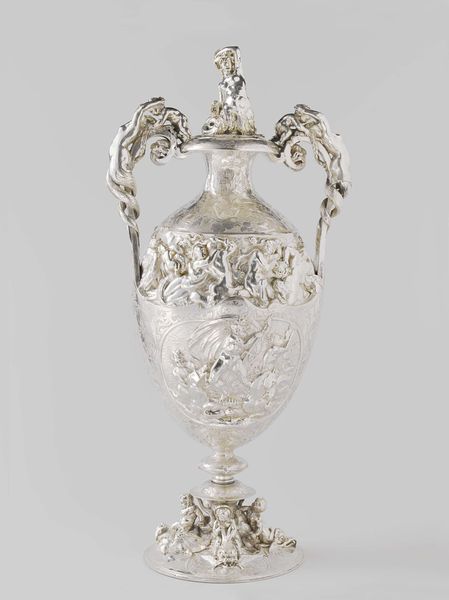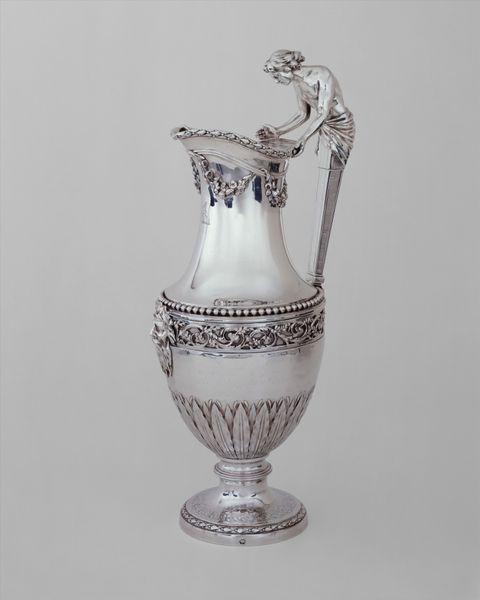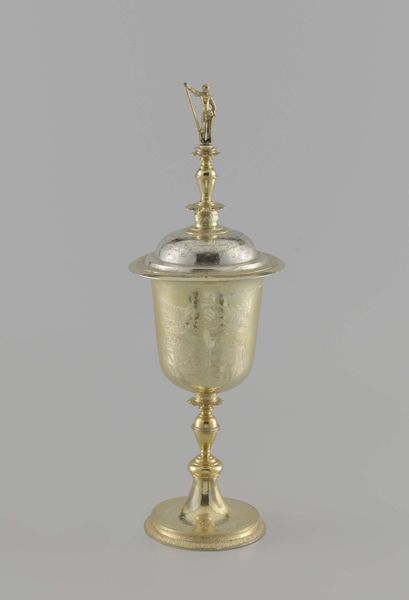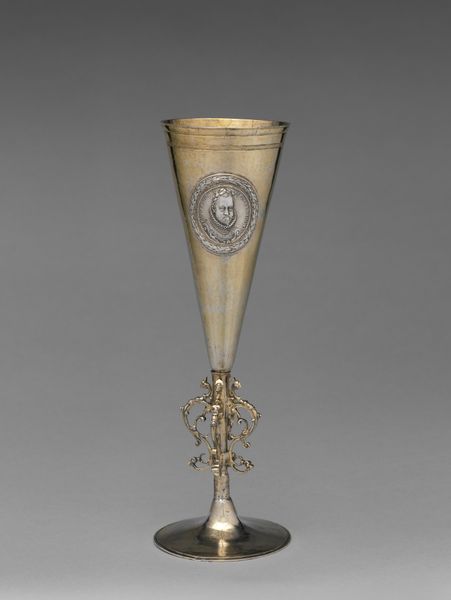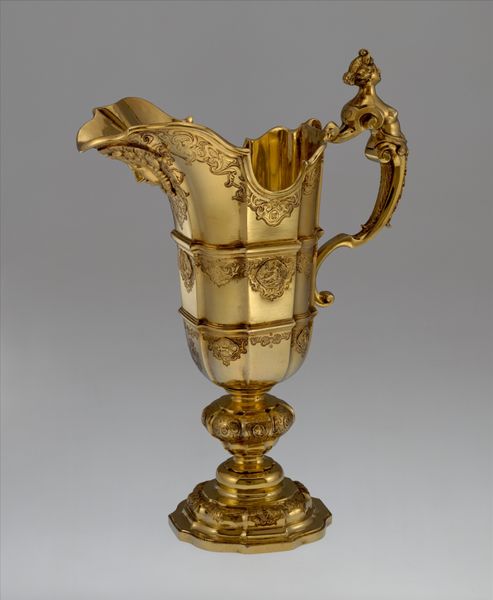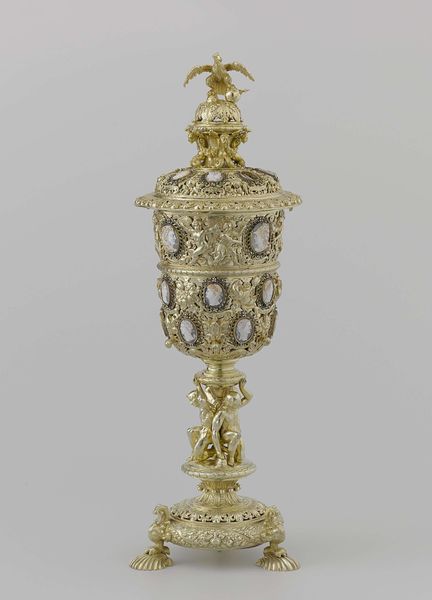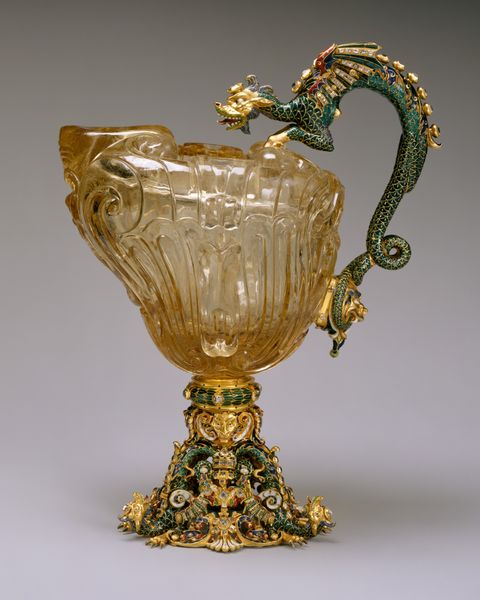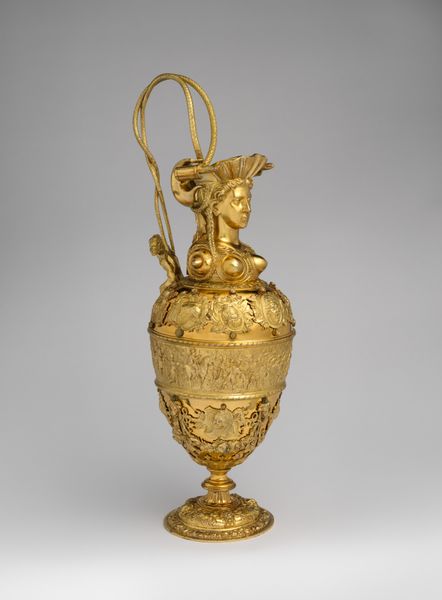
silver, sculpture
#
portrait
#
silver
#
baroque
#
flower
#
cupid
#
child
#
sculpture
#
decorative-art
Dimensions: Height: 11 13/16 in. (30 cm)
Copyright: Public Domain
Curator: Welcome. Today, we are examining a baroque standing cup with cover, dating from between 1695 and 1705. It is made of silver, and currently held in the collection of the Metropolitan Museum of Art. Editor: What a remarkable object! It has an impressive silvery gleam. I am intrigued by the texture created by the floral patterns and that tiny cupid perched on the lid, as if guarding something precious. It also seems rather… precarious. Curator: Precarious in what way? It is designed for display more than for active use. Standing cups like these became prominent displays of wealth in Europe. Their purpose goes beyond merely containing drink. Editor: Yes, it is clear it has to do with conspicuous consumption! Looking closer, the craftsmanship is truly impressive. You can tell the silversmith put hours of labour into chasing the intricate designs across its surface. Those weren't machine-stamped flowers, they are hand-tooled, making each slightly unique. It almost feels subversive. Curator: How so? Editor: The floral imagery and cherubic figures are designed to symbolize luxury, while all this craft involved to make the flowers seem hand-touched hints at the extensive labour involved. Where exactly this piece was produced could significantly alter the interpretation. This isn’t simply decoration; it's communicating something about the status of both patron and producer. Curator: That is a good point. It reflects on socio-economic hierarchies of the time, and also engages a system of patronage for which that silversmith may be tied to, or aspiring towards. These objects reinforce the authority of wealthy families through visual grandeur. A lot of silver would have been needed. Editor: The weight of that silver signifies a lot. But that craftsman put something of themself into the work. I think we could explore this piece through how the silversmith made his living during that period. Curator: A valid area to explore! The cultural value we place on craftsmanship as resistance. But equally, consider what messages the display of wealth, through finely worked materials, sent during a period of emerging global trade and shifting power dynamics. Editor: Well, I see I am learning plenty already from this decorative object today. It is not just about luxury. Curator: Nor solely about labor; context enriches any experience.
Comments
No comments
Be the first to comment and join the conversation on the ultimate creative platform.
